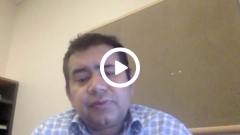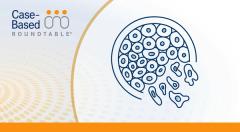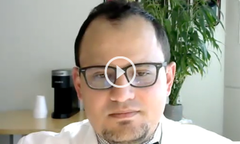
Earlier CAR T-Cell Therapy Benefits Functional High-Risk Group in RRMM
Binod Dhakal, MD, MS, discusses why patients could benefit from earlier use of chimeric antigen receptor T-cell therapy in relapsed/refractory multiple myeloma.
Episodes in this series

Binod Dhakal, MD, MS, associate professor of medicine in the Division of Hematology and Oncology at the Medical College of Wisconsin, discusses why patients could benefit from earlier use of chimeric antigen receptor (CAR) T-cell therapy in relapsed/refractory multiple myeloma (RRMM).
Ciltacabtagene autoleucel (cilta-cel; Carvytki) was approved for patients with RRMM who have been treated with at least 1 prior line of therapy based on the CARTITUDE-4 study (NCT04181827). The initial approval had been for patients who received 5 prior lines.
According to Dhakal, there are not good treatment options for patients who have received between 2 and 5 prior lines of therapy. Patients have already received at least 1 prior immunomodulatory drug (IMiD), proteasome inhibitor (PI), and anti-CD38 antibody, and they are more frequently receiving all 3 in the first line based on recent trial data in both transplant-eligible and -ineligible patients. Only CAR T cells and bispecific antibodies would offer a different mechanism of action that has shown strong efficacy, and so cilta-cel could fill a gap in this treatment space.
In particular, patients who have functional high-risk disease stand to benefit from the approval. These patients relapse rapidly and will not respond well to additional IMiD, PI, and anti-CD38 therapy. However, these patients had favorable responses to cilta-cel in CARTITUDE-4, highlighting that subpopulation could be high-priority candidates for CAR T-cell therapy in the first=relapse setting, even if other patients delay CAR T-cell therapy due to logistics or tolerability concern.
TRANSCRIPTION:
0:08 | Before this approval, cilta-cel was approved as a fifth line. Now we have the second-line approval. If you look at the types of treatment that we offer for [patients with RRMM], to be frank…after second line, there is not much good treatment out there.
0:29 | Once you have exposure to 3 different classes of drugs: the…PI, IMiD, and CD38, the next option is whatever available options, [which] are not that great, besides the CAR T and the bispecific antibodies. Before this approval, patients who are after second line, especially the majority of the patients in the [United States], even before were already exposed to these 3 classes of drugs. Now with the newer evidence of using CD38 in the frontline in both transplant eligible patient [and] the transplant ineligible, I think the majority of them will be exposed to 3 classes as early as first line. I think after that, there is not much effective treatment beyond what I said about the CAR T and bispecifics. I think having that approval is really going to fill the gap of that important treatment in that space. I think that's definitely going to change the landscape of what we're going to offer, especially after the second line, and definitely after the third line.
1:35 | What happens is that there are a lot of patients who get initial treatment, they relapse very early on. We call these functional high-risk patients. [For] these patients, regardless of what you do, there are not a lot of good therapies out there. But the emerging data, including the CARTITUDE-4 patient population, when we look at the patients who are relapsing early, they derive significant benefit using the cilta-cel. So I think those are the patients [who] really can benefit right away, having the cilta-cel in early line. That will help change the landscape—both the treatment landscape as well as the outcomes of these patients.












































